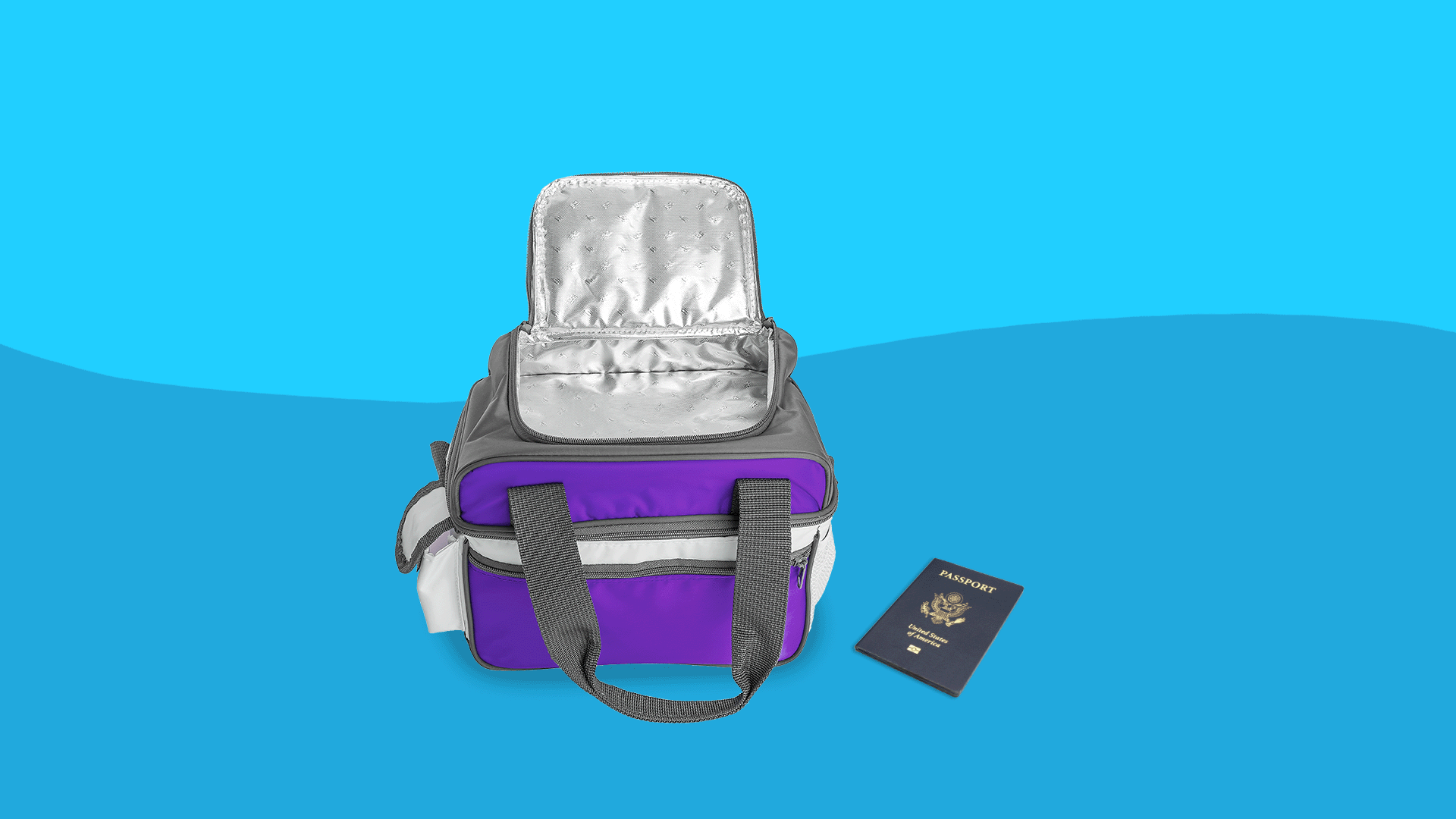Packing for a trip out of town, especially one that involves air travel, can be complicated. You need to think about things like the weight of your luggage, the size of your carry-on, the TSA requirements, COVID restrictions, and, for some travelers, how to get your refrigerated medications from point A to point B intact. Medicine that needs to be refrigerated includes insulin, certain antibiotic suspensions, and some biologics.
And this, says Norman Tomaka, M.Pharm., a clinical consultant pharmacist in Melbourne, Florida, and spokesperson for the American Pharmacists Association, requires plenty of forethought. You can’t just toss your meds into a handbag with an ice pack and call it good, he says. If you do, you might find yourself scrambling for a replacement prescription once you reach your destination.
Guidelines for traveling with refrigerated medications
1. Review TSA rules.
Familiarizing yourself with TSA regulations for medications is your starting point for flying with refrigerated medicine, Tomaka advises. The TSA website provides a handy list of basic guidelines (fortunately, the 3.4-ounce rule for taking liquids through airport security does not apply to medications), as well as general information about traveling with medical conditions.
For international travelers, the Centers for Disease Control and Prevention’s guide to traveling abroad with medicine is an excellent resource; anyone traveling abroad should consult it before leaving.
2. Learn how your meds should be stored.
Once you’ve done all of that, Tomaka advises finding out whether refrigeration for your medication is mandatory or simply preferred (your pharmacist should be able to supply this information). If it isn’t mandatory, refrigerating it once you reach your destination might suffice (depending on the length of the trip). If it is mandatory, you’ll need to find a way to keep it cool. Either way, do not put your prescription meds in checked luggage.
RELATED: 5 tips for traveling with prescription drugs
3. Pack medication safely.
“Never pack your medications in luggage,” Tomaka says. “For your safety and security, it needs to go in a carry-on bag.” Always leave medications in their original containers and place them inside a labeled plastic bag before putting them inside the cooling container, Tomaka advises.
4. Use portable cooling.
In terms of keeping your meds cool, Tomaka says there are several gadgets and portable coolers you can buy that are designed specifically for this purpose. “The (portable coolers) have separate compartments for the cooling agent as well as the medication, and they are very easy to present to the TSA agent for air travel,” he says.
You can also use your own portable ice chests and cooler gel packs (like the kind used for lunch boxes), says Vicki Sowards, director of nursing resources for Passport Health, a network of travel medicine and immunization clinics across North America. However, if you go that route make sure the gel packs are labeled as such so they don’t raise any eyebrows at the security checkpoint, Tomaka says.
If you would rather use ice, that’s fine too, says Sowards, as long you are able to replace the ice before it completely melts—you don’t want melted ice leaking into your medication and/or its packaging As for dry ice, don’t even think about it, says Tomaka.
“Dry ice is dangerous for multiple reasons,” he says. “One, you don’t want to handle it; and, two, it freezes [which would destroy the medication].”
RELATED: Are you prepared for an in-flight medical emergency?
5. Make sure the temperature stays stable.
Most importantly, no matter what you use to keep your refrigerated medications cool be sure to keep the temperature stable throughout the trip.
“Going in and out of refrigeration can break down the stability of the medication,” Tomaka says, adding that if you want an extra layer of protection you can always place a thermometer in the container to make sure it stays at the proper temp. Not sure what the proper temperature is? Ask your pharmacist.
6. Talk to airline staff.
Tomaka also suggests talking to the flight attendants—they may be able to place your meds in a refrigerator for you, or supply you with fresh ice. And, he urges travelers to carry copies of prescriptions, letters from doctors, and a TSA medical notification card that lists all the medications (refrigerated and non-refrigerated) you are carrying.
This way, all won’t be lost in the event of a refrigeration mishap. In other words, you’ll have the ability to get your meds replaced.











